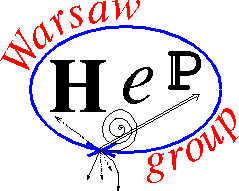Analysis of Earth’s very short UV phenomena visible from orbit with the Mini-EUSO telescope
Lech Wiktor Piotrowski, PhD (Lech-Wiktor.Piotrowski@fuw.edu.pl)
Mini-EUSO is a small UV telescope located on the International Space Station. It observes the night Earth and its atmosphere in the microsecond-millisecond range to understand the constant and variable emissions that would form the “background” for future orbital telescopes looking for UV fluorescence from Ultra-High Energy Cosmic Rays interacting in the air. These emissions are, in principle, an uncharted territory, since very few observations of this kind have been made in the past.
Among the known phenomena, Mini-EUSO observes a lot of meteors, ordinary lightning and constant background from the ground, which varies with the terrain type. However, we see many variable sources and flashes of unknown origin and constant sources not correlated with maps of light emission taken in visible light. The vast amount of data allows for the following exercises/research topics:
- Event classification in Mini-EUSO – grouping the events into categories and trying to understand
what are their properties, or even what they can be - Extended sources classification in Mini-EUSO – creating an algorithm to find extended sources
in the data, distinguishing them from clouds, comparing them with Earth’s maps and/or classifying
them - Analysing meteors found by Mini-EUSO – finding their parameters, such as velocities,
lightcurves, radiants, etc. - Search for tracks in Mini-EUSO data – a search for strangelets and cosmic rays
- Identifying Transient Luminous Events in Mini-EUSO – analysing possible TLEs that are not
Elves
The implementation of the exercise requires basic programming and data analysis skills (knowledge of Python is preferred).

